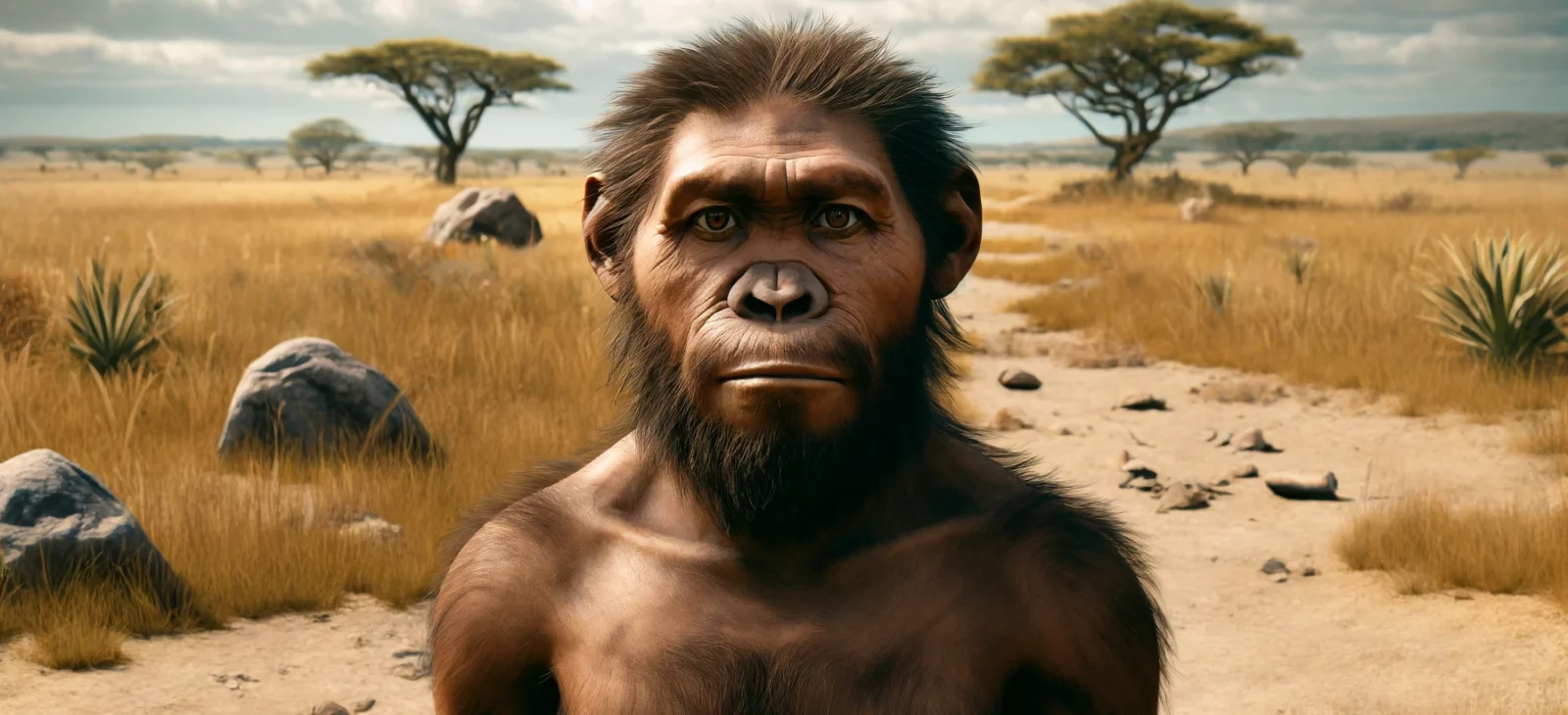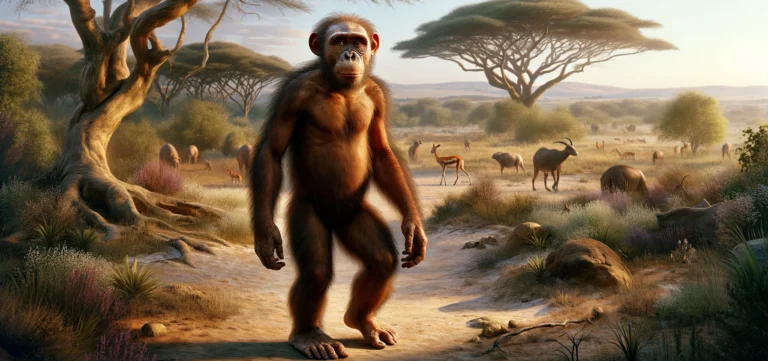Earliest Identified Human: Earlier hominins are “humanoid,” due to their human-like features, but the term “human” is reserved for species in the genus Homo. Homo habilis is the earliest known of these “early humans.”
First Earth Explorer: Known as the “handy man,” Homo habilis’s association with the earliest stone tools is evidence of unprecedented level of cognitive ability, including foresight, planning, and the ability to manipulate the environment in complex ways. They used stone tools as well as controlled fire. They were likely the first of “us” to explore most of the Earth. We know they evolved into at least 20 known species of which only Homo Sapiens survive today.
Survival: From about 2.4 to 1.4 MYA in Eastern and Southern Africa (in woodlands and grasslands)
Size: 3’4″ to 4’5″ (a bit taller than modern chimpanzees)
Brain Size: around 510 to 600 cm³
Brain to Body EQ: 3.3 to 3.8 (humans=7.4 to 7.8)



